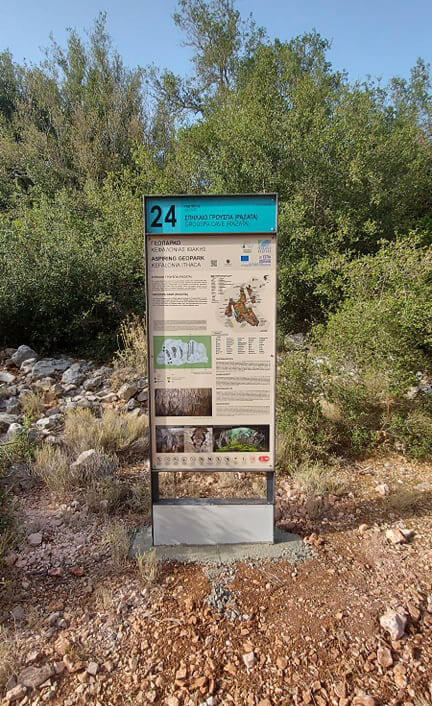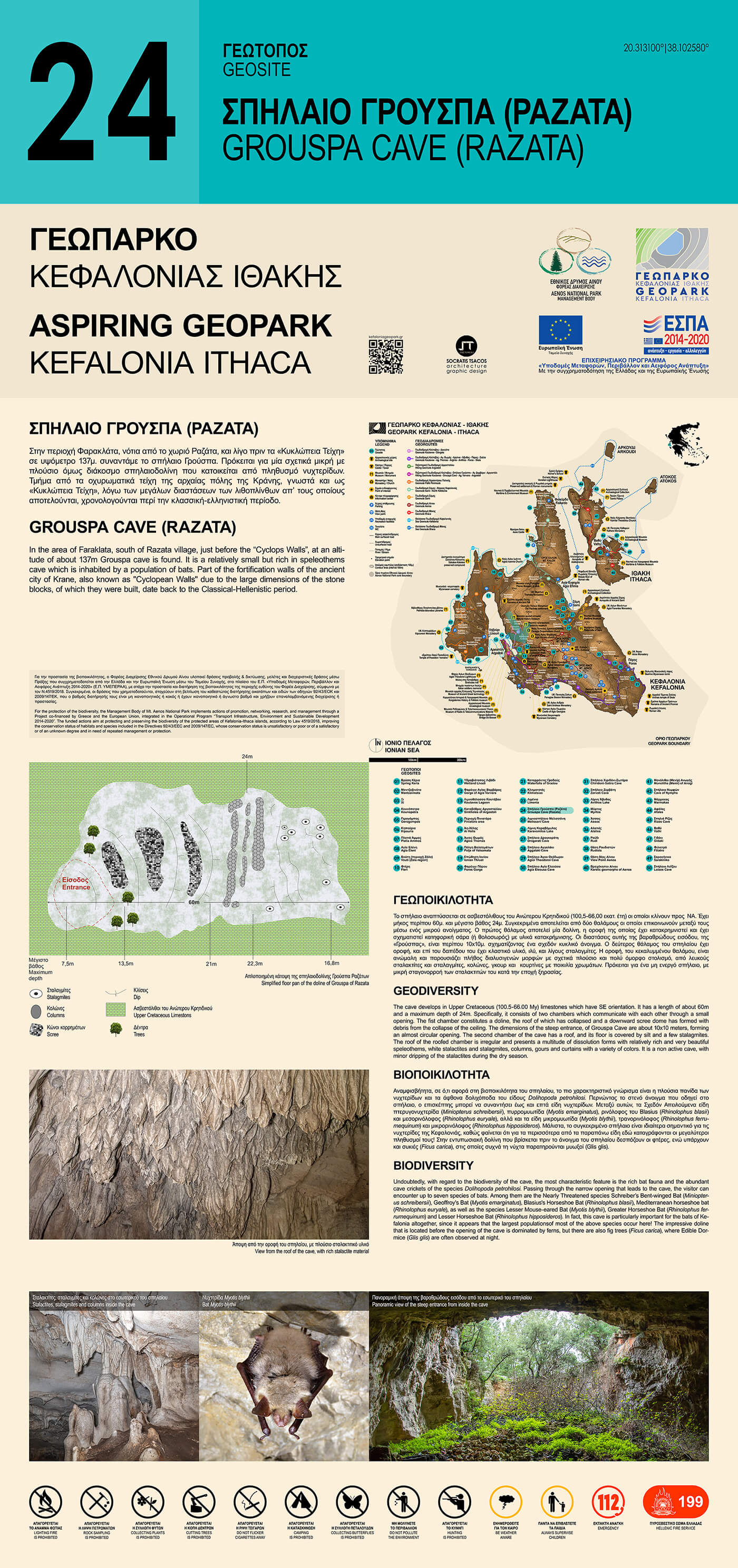In the area of Faraklata, south of Razata village, just before the “Cyclops Walls”, at an altitude of about 137m Grouspa cave is found (Figure 1). It is a relatively small but rich in speleothems cave which is inhabited by a population of bats. Part of the fortification walls of the ancient city of Krane, also known as "Cyclopean Walls" due to the large dimensions of the stone blocks of which they were built, date back to the Classical- Hellenistic period.

Geodiversity
The cave develops in Upper Cretaceous (100.5-66.00 My) limestones which have SE orientation. It has a length of about 60m and a maximum depth of 24m (Figure 2). Specifically, it consists of two chambers which communicate with each other through a small opening. The fist chamber constitutes a doline, the roof of which has collapsed and a downward scree dome has formed with debris from the collapse of the ceiling. The dimensions of the steep entrance, of Grouspa Cave are about 10x10 meters, forming an almost circular opening (Figure 3).


The second chamber of the cave has a roof, and its floor is covered by silt and a few stalagmites (Figure 4). The roof of the roofed chamber is irregular and presents a multitude of dissolution forms with relatively rich and very beautiful speleothems, white stalactites and stalagmites, columns, gours and curtains with a variety of colors. It is a non active cave, with minor dripping of the stalactites during the dry season. In the cave live groups of bats and plenty of cave crickets of the species Dolihopoda petrohilosi. Due to the presence of the bats there is a significant amount of guano (nitrate deposits of bat excreta) in various parts of the cave.

Biodiversity
Undoubtedly, with regard to the biodiversity of the cave, the most characteristic feature is the rich bat fauna. Passing through the narrow opening that leads to the cave, the visitor can encounter up to seven species of bats. Among them are the Nearly Threatened species Schreiber’s Bent-winged Bat (Miniopterus schreibersii), Geoffroy's Bat (Myotis emarginatus), Blasius's Horseshoe Bat (Rhinolophus blasii), Mediterranean horseshoe bat (Rhinolophus euryale), as well as the species Lesser Mouse-eared Bat (Myotis blythii) (Figure 5), Greater Horseshoe Bat(Rhinolophus ferrumequinum) and Lesser Horseshoe Bat (Rhinolophus hipposideros). In fact, this cave is particularly important for the bats of Kefalonia altogether, since it appears that the largest populations of most of the above species occur here! The impressive doline that is located before the opening of the cave is dominated by ferns, but there are also fig trees (Ficus carica), where Edible Dormice (Glis glis) are often observed at night.


